Aces High Air Manuals
Volume 13: Soviet Disc 1
Important: Many of these manuals are only available in Russian.
MiG-21

|
Mikoyan-Gurevich MiG-21bis Fishbed Flight Manual (English)
228 pages
The Mikoyan-Gurevich MiG-21 (NATO reporting name: Fishbed) is a supersonic jet fighter aircraft, designed by the Mikoyan-Gurevich Design Bureau in the Soviet Union. It was popularly nicknamed Balalaika, from the aircraft's planform-view resemblance to the Russian stringed musical instrument.
Early versions are considered second-generation jet fighters, while later versions are considered to be third-generation jet fighters. Approximately 60 countries over four continents have flown the MiG-21, and it still serves many nations six decades after its maiden flight. The fighter made aviation records. At least by name, it is the most-produced supersonic jet aircraft in aviation history and the most-produced combat aircraft since the Korean War, and it was previously the longest production run of a combat aircraft (now exceeded by both the McDonnell Douglas F-15 Eagle and General Dynamics F-16 Fighting Falcon) Photo credit: Chris Lofting License: GFDL 1.2 |
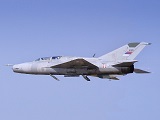
|
Mikoyan-Gurevich MiG-21UM Fishbed Flight Manual (Russian)
172 pages
Photo credit: claudiu_ne2000@wikipedia License: CC-BY-SA 2.0 |
MiG-29
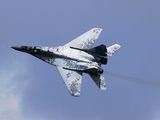
|
Mikoyan MiG-29 Fulcrum Flight Manual (Luftwaffe)(English)
157 pages
The Mikoyan MiG-29 is a jet
fighter aircraft designed in the Soviet Union. Developed by the Mikoyan design bureau
as an air superiority fighter during the 1970s, the MiG-29, along with the larger
Sukhoi Su-27, was developed to counter new American fighters such as the McDonnell
Douglas F-15 Eagle, and the General Dynamics F-16 Fighting Falcon.
The MiG-29 entered service with the Soviet Air Force in 1983.
While originally oriented towards combat against any enemy aircraft, many MiG-29s have been furnished as multirole fighters capable of performing a number of different operations, and are commonly outfitted to use a range of air-to-surface armaments and precision munitions. The MiG-29 has been manufactured in several major variants, including the multirole Mikoyan MiG-29M and the navalised Mikoyan MiG-29K; the most advanced member of the family to date is the Mikoyan MiG-35. Later models frequently feature improved engines, glass cockpits with HOTAS-compatible flight controls, modern radar and IRST sensors, considerably increased fuel capacity; some aircraft have also been equipped for aerial refuelling. Following the dissolution of the Soviet Union, a number of successor states have continued to operate the MiG-29; the largest of which is the Russian Air Force. The Russian Air Force wanted to upgrade its existing fleet to the modernised MiG-29SMT configuration, but financial difficulties have limited deliveries. The MiG-29 has also been a popular export aircraft; more than 30 nations either operate or have operated the aircraft to date, India being one of the largest export operators of the type. As of 2013, the MiG-29 remains in production by Mikoyan, which has been a subsidiary of United Aircraft Corporation (UAC) since 2006. Photo credit: KGyST@wikipedia License: CC-BY-SA 3.0 |

|
Mikoyan MiG-29 Fulcrum Flying Notes (Russian)
139 pages
In the original Russian.
|
Su-27
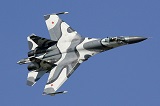
|
Sukhoi Su-27 Flanker Flight Manual (Russian)
182 pages
The Sukhoi Su-27 (NATO reporting name: Flanker) is a twin-engine supermaneuverable fighter aircraft designed by Sukhoi. It was intended as a direct competitor for the large United States fourth-generation fighters such as the Grumman F-14 Tomcat and F-15 Eagle, with 3,530-kilometre (1,910 nmi) range, heavy aircraft ordnance, sophisticated avionics and high maneuverability. The Su-27 was designed for air superiority missions, and subsequent variants are able to perform almost all aerial warfare operations. It was designed with the Mikoyan MiG-29 as its complement (The role of the Fulcrum is tactical air superiority over the battlefield, engaging NATO fighters and strike aircraft).
The Su-27 entered service with the Soviet Air Forces in 1985. The primary role was long range air defence against American SAC B-1B and B-52G/H bombers, protecting the Soviet coast from aircraft carriers and flying long range fighter escort for Soviet heavy bombers such as the Tu-95 Bear, Tu-22M Backfire and Tu-160 Blackjack. Photo credit: Dmitriy Pichugin License: GFDL 1.2 |
WWII and Pre-War
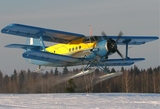
|
Antonov AN-2 Annushka Flight Manual (Russian)
95 pages
The Antonov An-2 (Russian nickname Annushka) is a Soviet mass-produced single-engine biplane utility/agricultural aircraft designed and manufactured by the Antonov Design Bureau (now State Company) since 1946. Its NATO reporting name is Colt.
Photo credit: Sergey Ryabtsev License: GFDL 1.2 |

|
Ilyushin IL-2 Sturmovik Flight Manual (English)
84 pages
The Ilyushin Il-2 Sturmovik was a ground-attack aircraft produced by the Soviet Union in large numbers during the Second World War. With 36,183 examples of the Il-2 produced during the war, and in combination with its successor, the Ilyushin Il-10, a total of 42,330 were built, making it the single most produced military aircraft design in aviation history, as well as one of the most produced piloted aircraft in history along with the American postwar civilian Cessna 172 and the Soviet Union's own then-contemporary Polikarpov Po-2 Kukuruznik multipurpose biplane.
|

|
Lavochkin-Gorbunov-Gudkov LaGG-3 Manual (Russian)
41 pages
The Lavochkin-Gorbunov-Gudkov LaGG-3 was a Soviet fighter aircraft of World War II. It was a refinement of the earlier LaGG-1, and was one of the most modern aircraft available to the Soviet Air Force at the time of Germany's invasion in 1941.
|
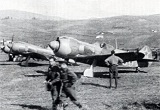
|
Lavochkin La-5 Pilot's Manual (English)
21 pages
The Lavochkin La-5 was a Soviet fighter aircraft of World War II. It was a development and refinement of the LaGG-3 and was one of the Soviet Air Force's most capable types of warplane.
|
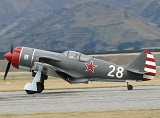
|
Lavochkin La-9 and La-11 Operation and Maintenance Manual (Russian)
265 pages
The Lavochkin La-9 (NATO reporting name Fritz) was a Soviet fighter aircraft produced shortly after World War II. It was a piston engined aircraft produced at the start of the jet age.
The Lavochkin La-11 (NATO reporting name Fang) was an early post-World War II Soviet long-range piston-engined fighter aircraft. Photo credit: Mpj17@wikipedia License: CC BY 2.5 |
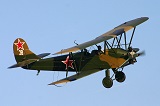
|
Polikarpov Po-2 Kukuruznik Flight Manual (Russian)
117 pages
The Polikarpov Po-2 (also U-2) served as a general-purpose Soviet biplane, nicknamed Kukuruznik (from Russian "kukuruza" for corn; thus, "corn duster" or "crop duster"), NATO reporting name Mule. The reliable, uncomplicated concept of the Po-2's design made it an ideal training aircraft, as well as doubling as a low-cost ground attack, aerial reconnaissance, psychological warfare and liaison aircraft during war, proved to be one of the most versatile light combat types to be built in the Soviet Union. As of 1978 it remained in production for a longer period of time than any other Soviet-era aircraft.
It is one of the most produced aircraft, and may be the most produced biplane with production possibly as high as 30,000 Po-2s built between 1928 and 1959. However, production figures for Polikarpov U-2 and Po-2 bombers and trainers combined are between 20,000 and 30,000, with production ending as early as 1952. Correct figures are hard to come by since low-rate production by small repair shops and air clubs likely continued until 1959. Photo credit: Alan Wilson License: CC-BY-SA 2.0 |
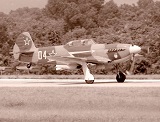
|
Yakovlev Yak-9 Technical Manual (Russian)
134 pages
The Yakovlev Yak-9 was a single-engine fighter aircraft used by the Soviet Union in World War II and after. Fundamentally a lighter development of the Yak-7 with the same armament, it arrived at the front at the end of 1942. The Yak-9 had a lowered rear fuselage decking and all-around vision canopy. Its lighter airframe gave the new fighter a flexibility that previous models had lacked. The Yak-9 was the most mass-produced Soviet fighter of all time. It remained in production from 1942 to 1948, with 16,769 built (14,579 during the war). Towards the end of the war, the Yak-9 was the first Soviet aircraft to shoot down a Messerschmitt Me 262 jet. Following World War II it was used by the North Korean Air Force during the Korean War.
|
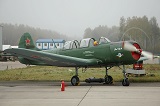
|
Yakovlev Yak-18 Pilot's Manual (Russian)
52 pages
The Yakovlev Yak-18 (NATO reporting name Max) was a Soviet tandem two-seat military primary trainer aircraft. Originally powered by one 119 kW (160 hp) Shvetsov M-11FR-1 radial piston engine, it entered service in 1946. It is also produced in China as the Nanchang CJ-5. The type was used for the initial flight training of cosmonaut Yuri Gagarin, the first human in space. About 40 Yak-18s remain today, a handful still airworthy.
|

|
Tupolev Tu-2 Pilot's Instruction (Russian)
107 pages
The Tupolev Tu-2 (NATO reporting name Bat) was a twin-engine Soviet high-speed daylight and frontline (SDB and FB) bomber aircraft of World War II vintage. The Tu-2 was tailored to meet a requirement for a high-speed bomber or dive-bomber, with a large internal bombload, and speed similar to that of a single-seat fighter. Designed to challenge the German Junkers Ju 88, the Tu-2 proved comparable, and was produced in torpedo, interceptor and reconnaissance versions. The Tu-2 was one of the outstanding combat aircraft of World War II and it played a key role in the Red Army's final offensives.
Photo credit: Max Smith License: Public Domain |

|
Tupolev TB-3 Technical Manual Part 1 of 3 (Russian)
43 pages
The Tupolev TB-3 (Civilian designation ANT-6) was a heavy bomber aircraft which was deployed by the Soviet Air Force in the 1930s and during World War II. It was the world's first cantilever wing four-engine heavy bomber. Despite obsolescence and being officially withdrawn from service in 1939, the TB-3 performed bomber and transport duties throughout much of World War II. The TB-3 also saw combat as a Zveno project fighter mothership and as a light tank transport.
|
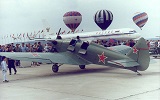
|
Tupolev UT-2 Description, Operation Manual, and Repair (Russian)
248 pages
The Yakovlev UT-2 (NATO reporting name Mink) was a single-engine tandem two-seat low-wing monoplane that was the standard Soviet trainer during the Great Patriotic War. It was used by the Soviet Air Force from 1937 until replaced by the Yakovlev Yak-18 during the 1950s.
|
Transports and Airliners
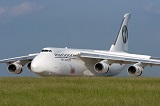
|
Antonov An-124 Flight Operations Manual, Book 1 (Russian)
444 pages
The Antonov An-124 Ruslan (NATO reporting name: Condor) is a strategic airlift jet aircraft. It was designed in the 1980s by the Antonov design bureau in the Ukrainian SSR, then part of the Soviet Union.
Photo credit: Marek Vanzura License: GFDL 1.2 |

|
Antonov An-124 Flight Operations Manual, Book 2 (Russian)
1093 pages
Until the Boeing 747-8F, the An-124 was, for thirty years, the world's heaviest aircraft gross weight production cargo airplane and second heaviest operating cargo aircraft, behind the one-off Antonov An-225 Mriya (a greatly enlarged design based on the An-124). The An-124 remains the largest military transport aircraft in the world.
|
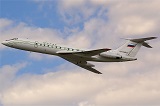
|
CIA Manual: The Tu-134 Aircraft with D-30 Engines - Provisional Instructions for Operational Flight and Piloting (English)
296 pages
The Tupolev Tu-134 (NATO reporting name: Crusty) is a twin-engined, narrow-body, jet airliner built in the Soviet Union from 1966 to 1989. The original version featured a glazed-nose design and, like certain other Russian airliners (including its sister model the Tu-154), it can operate from unpaved airfields.
One of the most widely used aircraft in former Comecon countries, the number in active service is decreasing because of political intention and noise restrictions. The model has seen long-term service with some 42 countries, with some European airlines having scheduled as many as 12 daily takeoffs and landings per plane. In addition to regular passenger service, it has also been used in various air force, army and navy support roles; for pilot and navigator training; and for aviation research and test projects. Photo credit: Gennady Misko License: CC-BY-SA 3.0 |
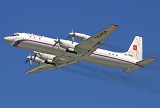
|
CIA Manual: IL-18 Pilot's Flight Operating Instructions
294 pages
The Ilyushin Il-18 (NATO reporting name: Coot) is a large turboprop airliner that first flew in 1957 and became one of the best known and durable Soviet aircraft of its era. The Il-18 was one of the world's principal airliners for several decades and was widely exported. Due to the aircraft's airframe durability, many examples achieved over 45,000 flight hours and the type remains operational in both military and (to a lesser extent) civilian capacities. The Il-18's successor was the long range Il-62 jet airliner.
Photo credit: Sergey Riabsev License: GFDL 1.2 |
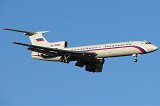
|
Tupolev Tu-154 Operation and Maintenance Manual (Russian)
834 pages
The Tupolev Tu-154 (NATO reporting name: Careless) is a three-engine medium-range narrow-body airliner designed in the mid-1960s and manufactured by Tupolev. A workhorse of Soviet and (subsequently) Russian airlines for several decades, it carried half of all passengers flown by Aeroflot and its subsidiaries (137.5 million/year or 243.8 billion passenger km in 1990), remaining the standard domestic-route airliner of Russia and former Soviet states until the mid-2000s. It was exported to 17 non-Russian airlines and used as a head-of-state transport by the air forces of several countries.
|

|
Tupolev Tu-154 Technical Operation Manual (Russian)
220 pages
Photo credit: Kirill Naumenko License: CC-BY-SA 3.0 |
Soviet Ministry of Defence briefs on Western aircraft,
provided to Soviet Air Force combat units.

|
A-10 Thunderbolt II (Warthog) Soviet Air Force brief (Russian)
60 pages
What the Soviet Union knew about the Fairchild Republic A-10 Thunderbolt II ground-attack aircraft.
|
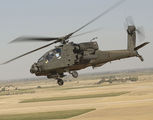
|
AH-64A Apache Soviet Air Force brief (Russian)
40 pages
What the Soviet Union knew about the Boeing AH-64 Apache attack helicopter.
|
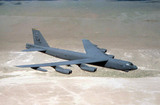
|
B-52 Stratofortress Soviet Air Force brief (Russian)
52 pages
What the Soviet Union knew about the Boeing B-52 Stratofortress long-range strategic bomber.
|

|
F-15 Eagle Soviet Air Force brief (Russian)
61 pages
What the Soviet Union knew about the McDonnell Douglas F-15 Eagle air-superiority tactical fighter.
|
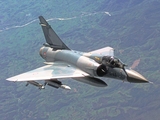
|
Mirage F1 and Mirage 2000 Soviet Air Force brief (Russian)
89 pages
What the Soviet Union knew about the Dassault Mirage F1 attack fighter and Mirage 2000 multirole fighter.
|
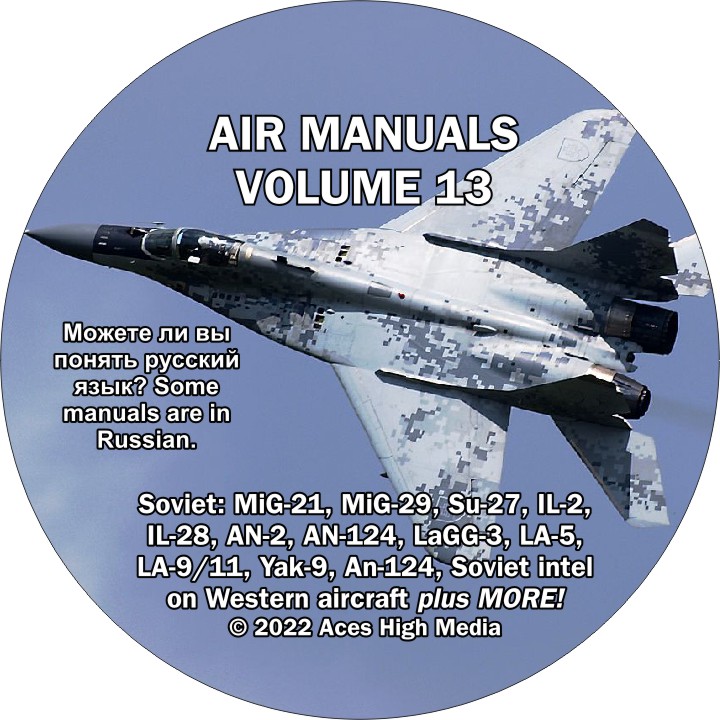

Photo credit: Radomil@wikimedia License: CC-BY-SA 3.0